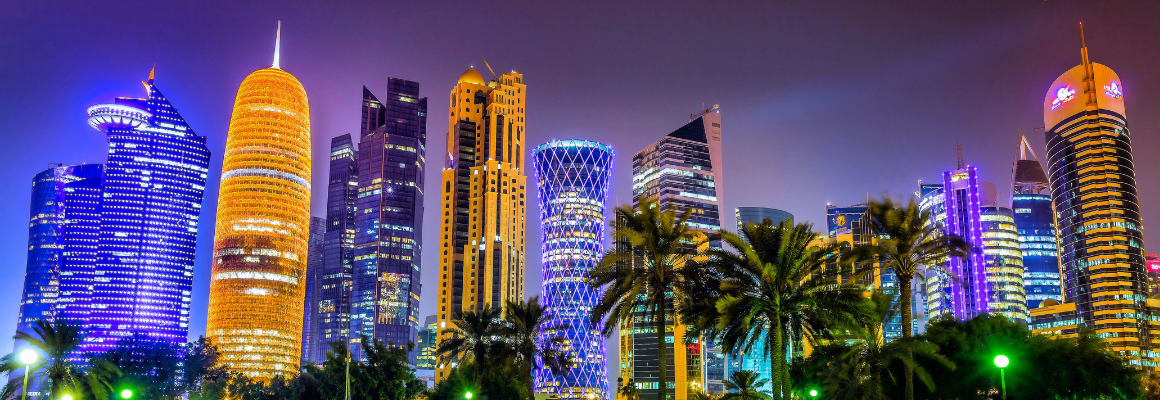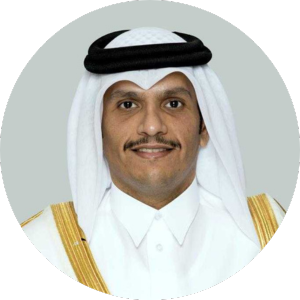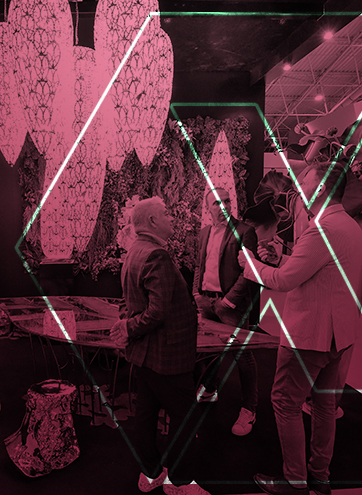2023 Development Update: Doha
28 Apr. 2023On the heels of the FIFA World Cup Qatar, the capital city continues to grow

It was hard to ignore Doha last year. In the run-up to the FIFA World Cup Qatar 2022 in November, the capital, situated on Qatar’s Persian Gulf coast, buzzed with activity. For example, the reimagined Museum of Islamic Art, originally designed by I.M. Pei in 2008, unveiled a trove of new objects arranged in an easier-to-navigate permanent collection. Likewise, the 3-2-1 Qatar Olympic and Sports Museum popped up at Khalifa International Stadium showcasing a cylindrical glass building punctuated with rings by Spanish architect Joan Sibina.
Hordes of travelers from around the world who descended upon Doha last fall had ample cultural activities and scenic views to keep them busy in between anticipated soccer games—and plenty of new hotels that were built just in time for the coveted event to check into. But now that the World Cup has passed, is Doha still poised to attract a regularly robust swath of visitors?
According to STR, 49 hotel projects are under construction in Doha, leading to 13,841 new guestrooms. One of the more bullish hospitality heavyweights making an impact on the city is Accor. “Accor has been present in Qatar since 2001, with the opening of Mövenpick Hotel Doha. Since then, the portfolio has grown to 11 properties with more than 2,800 keys in the city,” says Maya Ziadeh, senior vice president of development for premium, midscale, and economy brands in the Middle East, Africa, and Turkey. “We see demand for properties in this market continuing as the city remains to be attractive for travelers not only visiting for business purposes, but leisure.”
Ziadeh points to forthcoming international events such as the Formula 1 Qatar Grand Prix, the Geneva International Motor Show, and the AFC Asian World Cup as helpful in cementing Doha’s appeal as a destination. The Qatari government entity Qatar Museums also hopes to reel in more tourists by invigorating its already impressive arts scene (including the Jean Nouvel-designed National Museum of Qatar) with a trifecta of future institutions: the Lusail Museum by Herzog & de Meuron, the Qatar Auto Museum by OMA, and the Art Mill by Elemental.
In 2022 alone, Accor opened six properties in the city, with plans in 2023 for the Rixos Qetaifan Island Doha and the Swissôtel Doha Corniche Park Towers Hotel and Residences. Also notably forthcoming: Doha is slated to welcome a 200-room EDITION in 2024.

Rixos Gulf Hotel Doha + Pullman Doha West Bay
Doha, like its more crowded neighbor Dubai, is awash in futuristic architecture and luxurious interior design, and some of these new Accor arrivals reinforce that spirit. The 350 guestrooms of Rixos Gulf Hotel Doha, Qatar’s first all-inclusive resort, are spread out across two towers in the former Gulf Hotel, which opened as the country’s first 5-star property in 1973. Dominated by an earthy palette, it features private garden cabanas and the capstone sea view Katara suite, while at the 375-room, 93-apartment Pullman Doha West Bay, the spa flaunts an outdoor pool and Moroccan hammam.
Fairmont Doha + Raffles Doha
Housed within the striking crescent-shaped Katara Towers skyscraper by architecture firm Dar-Al-Handasah are both the Fairmont and Raffles hotels. The former takes cues from swanky yachts, inviting guests in with a soaring chandelier glimmering over swoops of marble, and dressing its 362 guestrooms and baths in glossy dark wood, white leather, and 18k gold tiles. Over at the 132-suite Raffles designed by Marcel Wanders (sister property the Mondrian, which opened in 2017, was the Dutch designer’s first Middle Eastern hotel), the air is even more exclusive, starring wrought-iron gates, handcarved ceilings, bathrooms with crystal walls, and the two-story Royal penthouse.


Waldorf Astoria Lusail, Doha
Hilton is also leaving a memorable imprint on Qatar. Most recently, the Waldorf Astoria Lusail, Doha, a 15-minute drive from downtown, made its debut on a private beach with 429 guestrooms and apartments, the first ESPA Life spa in the Middle East, and outposts of SUSHISAMBA and LDV Hospitality’s Scarpetta. Completed by WATG’s architecture and landscape studios, as well as Wimberly Interiors, its lobby also woos visitors with a nearly 23-foot-high peacock ceiling designed by Paris-based Pierre-Yves Rochon.
“Our mission was to create a fresh and distinguished building design, which would sit on this beachfront site with real presence and dignity,” says Jeremy T. Heyes, senior vice president and managing director of WATG’s London office. In consideration of the hotel’s coastal location on a headland, the project recalls “the sweeping curves of ocean liners and the overall composition is that of a bird’s wing, evoking the moment when a swan takes off or lands over water. The avoidance of hard corners anywhere within the building envelope emphasizes the inherent movement within.”
Marriott International
Last November, Marriott expanded its Autograph collection with two properties in the area. Al Samriya, Doha is found in the middle of a farm in Al Shahaniya, outside of the capital, bringing together 60 guestrooms and 27 villas. Its décor, a fusion of dramatic chandeliers and distinctive stone walls, is at once ritzy and rustic. By contrast, the more urban-centric Agora, Doha in Lusail buoys its 158 muted suites with a chaise-lined outdoor infinity pool.
Fall also saw the opening of the art-filled St. Regis Marsa Arabia Island, the Pearl Qatar, the second Doha offering from Marriott. The 193-suite property has a decidedly Andalucian influence, and a courtyard graced with Iraqi sculptor Ahmed Al Bahrani’s falcon sculpture.


Andaz Doha
Madrid studio Brime Robbins explored the concept Kaleidoscope of Cultures for Hyatt’s soon-to-open 292-room, 56-residence Andaz Doha in West Bay. The hotel plunges visitors into Qatari culture with its artifact- and map-laden Discovery Wall, an enveloping tapestry that references the craft of Al Sadu weaving, corridor carpets reminiscent of the Doha coastline, and mashrabiya patterned ceilings.
The Ned Doha
It’s not the only boutique-minded, lifestyle-driven hotel finding a home in Doha. There’s the long-awaited Dream Doha, Dream Hotel Group’s Gulf flagship by MiGG Enterprises and New York studio Meyer Davis to look forward to, as well as newcomer the Ned Doha from Membership Collective Group, parent company to Soho House. Following the Ned locations in London and New York, the Doha hotel and members club has the feel of a moody playground, packing 90 guestrooms, seven restaurants, and a pool and spa across five floors of the former Ministry of Interior building. The Brutalist structure, designed in the 1970s by Lebanese architect William Sednaoui, was updated by the Berlin office of David Chipperfield Architects and bolstered by interiors from London’s Soho House design team.
“The architectural bones we had in the space are geometrically strong at a large scale, which is seen a lot in other buildings in Doha. We layered this with finishes, furniture, and fabrics that are familiar to the Ned and a nod to the 1970s,” says Soho House principal architect Michael Cowen.

These include terrazzo flooring, silk drapery, woven and mirrored fabric headboards, and plenty of vintage pieces. One of them, Vladimir Kagan’s Serpentine sofa, “greets you to Ned’s Club with the iconic Doha skyline as a backdrop; it definitely makes an impression when you enter,” adds Soho House senior designer Sophie Baker.
Cool marble, a familiar sight in Doha, is used generously at the Ned, but with “our own twist, which plays with color, texture, and bringing it down to a human scale in places,” explains Soho House principal designer Severine Lammoglia, such as the floor, a reinterpretation of local patterns, and inlays on the club atrium and hotel balconies.
A pergola structure developed with David Chipperfield Architects, is “a great example of how we added a new element to the property,” points out Soho House senior architect Karen Tsui, “which marks a new era for the building as much as it complements it.”
Source Credit: Hospitality Design





